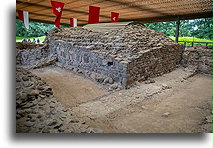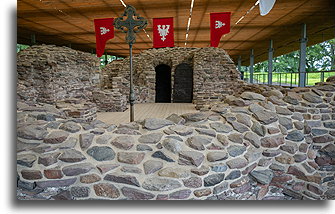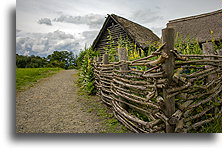The medieval Slavic defensive settlement, the gord, was built on an island on Lake Lednica during the reign of the first Polish ruler, Prince Mieszko I. It was one of the most important strongholds of that period and is closely linked to the beginnings of the Polish state.
The gord was fortified with wooden structures and had two stone buildings, a small palace with a chapel and a church. Two larger basins in the floor of the chapel, baptismal pools, suggest that Ostrów Lednicki is probably the place where Christianity was introduced to Poland in AD 966 through the personal baptism of Mieszko I.



Before Christianity was introduced to these lands, the Slavs worshipped the forces of nature identified with many deities, as well as the spirits of their ancestors. The same deities were present in many tribes, others were local. Each tribe had its own ancestor spirits, which it worshipped. The Slavs believed that the god of a foreign tribe was as real as their own. The practice of the Slavic religion allowed for the possibility of rejecting the cult of one deity in favor of another, the stronger one. Therefore, it is assumed that the acceptance of the victorious and stronger Christian God of the Saxons and Czechs was a natural course of events. The conversion to Christianity also brought political benefits.




